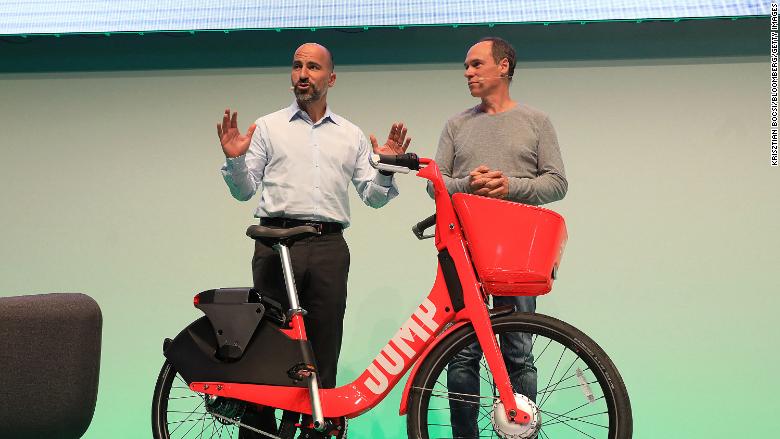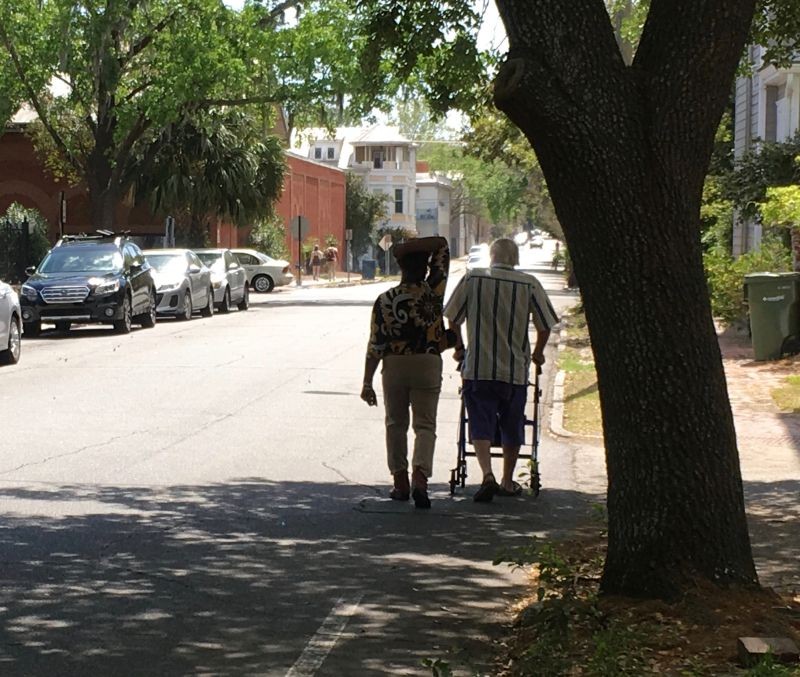Americans often complain that French--or even Asian--waiters are "rude," or simply not friendly.
On the other hand, some gourmands will argue that the quality of a restaurant's food is inversely proportional to the friendliness of its service.
I would agree with that second assertion, to a point. I recall that the old Second Avenue Deli had, arguably, the best matzoh ball soup and pastrami sandwiches--and the rudest waiters--in Manhattan. And I have been in many a restaurant--yes, even Italian and Indian-Pakistani ones--where I loved the food but the waitstaff weren't vying to be Mr. or Ms. Congeniality.
Now, French and even high-end Asian restaurants represent cultures very different (at least in some ways) from those that gave us the various ethnic restaurants found in New York and other American cities. But I have always sensed that there is a certain kinship in the attitude of waitstaff.
In France, and perhaps to a lesser degree in other European and Asian countries, being a waiter or waitress isn't something you do to pay for college or because you don't have the documentation or credentials for other kinds of work. In fact, it isn't just a job: It's a profession.
One almost never hears the words "professional" and "waiter" or "waitress" used together in the English-speaking world. That, perhaps, is a reason why they are not given respect--or a living wage. (As you may know, you don't tip a waiter in France: there's a service charge built into your bill.) On the other hand, a waiter, like a chef, sous chef or anyone else involved in creating, preparing and delivering a meal, is expected to help create a dining experience. So a waiter not only hauls trays and plates; he or she also choreographs the dining experience, ensuring that everything from the table arrangement to the wines are appropriate for the meal that is being consumed.
I think now of something a lawyer once told me: "It's not my job to be my client's friend; I am here to be my client's advocate." I think it's a fair summation of any profession. Yes, you want your lawyer or doctor or teacher or whoever to be courteous and respectful. But it's not his or her job to be your buddy. And that professional does not quit at a certain time of day. Most important of all, a professional is always learning something new.
I know of bike mechanics like that. In fact, I go to a couple of them when I don't have the right tool(s) or simply don't have (or don't want to spend) the time to do something properly. The mechanics I am talking about have been doing their work for years, or even decades, and because of their expertise, they work year-round in shops, even during seasons when other mechanics are laid off.
They aren't professionals just because they're getting paid to work on bikes: They attain such status, at least in my eyes, because of the way they approach their work--and their relations with customers. Their goal is to make your bike work, and to work for you. Moreover, they understand how bikes and cyclists are changing--and remaining the same.
But almost nobody--at least in the US--thinks of being a bike mechanic as a profession. Part of the reason, I suspect, as that most mechanics, save for the ones I've described, don't see themselves as practicing a profession. It's a job--as, I admit, fixing and assembling bikes was for me at different times in my life--that will sustain you until you complete your degree or move on to something else in your life.
Also, a professional isn't bound by one employer or workplace. As an example, a doctor doesn't stop being a doctor upon leaving a hospital where he or she worked--or if that hospital shuts down. That doctor can work elsewhere, or set up his or her own practices.
Mechanics are going to need that sort of mobility. With the rise of internet sales and bike-share programs--and rising rents--the existence of a bike shop is increasingly precarious. But even if people buy their bikes from online wholesalers or use bike-share programs (instead of renting bikes from shops), someone will have to assemble that new bike, or fix it after it's been ridden through streets and over hill and dale. Many cyclists don't have the time or inclination to make those repairs (or they're not allowed to fix share bikes). So, there will always be a need, I believe, for mechanics. And because bike designs, and the ways in which bikes are ridden, are changing, mechanics and other bike industry professionals need to keep on learning.
As I understand, those are the motivations behind the Professional Bicycle Mechanics Association, founded two and a half years ago. As its president, James Stanfill, says, "Service is to me what we do for others, and for us mechanics, it is absolutely inclusive of all we, as an industry, do for others."
Many mechanics, and others in the bike industry, are already living and working by that credo. So it makes sense to start a "professional association" (which is not the same thing as a union) for bike mechanics. I mean, auto mechanics are recognized as professionals, as they should be. So why not bike mechanics? If nothing else, I think such recognition would help not only to bring more respect to the bicycle industry, but to cycling itself.
On the other hand, some gourmands will argue that the quality of a restaurant's food is inversely proportional to the friendliness of its service.
I would agree with that second assertion, to a point. I recall that the old Second Avenue Deli had, arguably, the best matzoh ball soup and pastrami sandwiches--and the rudest waiters--in Manhattan. And I have been in many a restaurant--yes, even Italian and Indian-Pakistani ones--where I loved the food but the waitstaff weren't vying to be Mr. or Ms. Congeniality.
Now, French and even high-end Asian restaurants represent cultures very different (at least in some ways) from those that gave us the various ethnic restaurants found in New York and other American cities. But I have always sensed that there is a certain kinship in the attitude of waitstaff.
In France, and perhaps to a lesser degree in other European and Asian countries, being a waiter or waitress isn't something you do to pay for college or because you don't have the documentation or credentials for other kinds of work. In fact, it isn't just a job: It's a profession.
One almost never hears the words "professional" and "waiter" or "waitress" used together in the English-speaking world. That, perhaps, is a reason why they are not given respect--or a living wage. (As you may know, you don't tip a waiter in France: there's a service charge built into your bill.) On the other hand, a waiter, like a chef, sous chef or anyone else involved in creating, preparing and delivering a meal, is expected to help create a dining experience. So a waiter not only hauls trays and plates; he or she also choreographs the dining experience, ensuring that everything from the table arrangement to the wines are appropriate for the meal that is being consumed.
I think now of something a lawyer once told me: "It's not my job to be my client's friend; I am here to be my client's advocate." I think it's a fair summation of any profession. Yes, you want your lawyer or doctor or teacher or whoever to be courteous and respectful. But it's not his or her job to be your buddy. And that professional does not quit at a certain time of day. Most important of all, a professional is always learning something new.
I know of bike mechanics like that. In fact, I go to a couple of them when I don't have the right tool(s) or simply don't have (or don't want to spend) the time to do something properly. The mechanics I am talking about have been doing their work for years, or even decades, and because of their expertise, they work year-round in shops, even during seasons when other mechanics are laid off.
They aren't professionals just because they're getting paid to work on bikes: They attain such status, at least in my eyes, because of the way they approach their work--and their relations with customers. Their goal is to make your bike work, and to work for you. Moreover, they understand how bikes and cyclists are changing--and remaining the same.
But almost nobody--at least in the US--thinks of being a bike mechanic as a profession. Part of the reason, I suspect, as that most mechanics, save for the ones I've described, don't see themselves as practicing a profession. It's a job--as, I admit, fixing and assembling bikes was for me at different times in my life--that will sustain you until you complete your degree or move on to something else in your life.
Also, a professional isn't bound by one employer or workplace. As an example, a doctor doesn't stop being a doctor upon leaving a hospital where he or she worked--or if that hospital shuts down. That doctor can work elsewhere, or set up his or her own practices.
Mechanics are going to need that sort of mobility. With the rise of internet sales and bike-share programs--and rising rents--the existence of a bike shop is increasingly precarious. But even if people buy their bikes from online wholesalers or use bike-share programs (instead of renting bikes from shops), someone will have to assemble that new bike, or fix it after it's been ridden through streets and over hill and dale. Many cyclists don't have the time or inclination to make those repairs (or they're not allowed to fix share bikes). So, there will always be a need, I believe, for mechanics. And because bike designs, and the ways in which bikes are ridden, are changing, mechanics and other bike industry professionals need to keep on learning.
As I understand, those are the motivations behind the Professional Bicycle Mechanics Association, founded two and a half years ago. As its president, James Stanfill, says, "Service is to me what we do for others, and for us mechanics, it is absolutely inclusive of all we, as an industry, do for others."
Many mechanics, and others in the bike industry, are already living and working by that credo. So it makes sense to start a "professional association" (which is not the same thing as a union) for bike mechanics. I mean, auto mechanics are recognized as professionals, as they should be. So why not bike mechanics? If nothing else, I think such recognition would help not only to bring more respect to the bicycle industry, but to cycling itself.


















